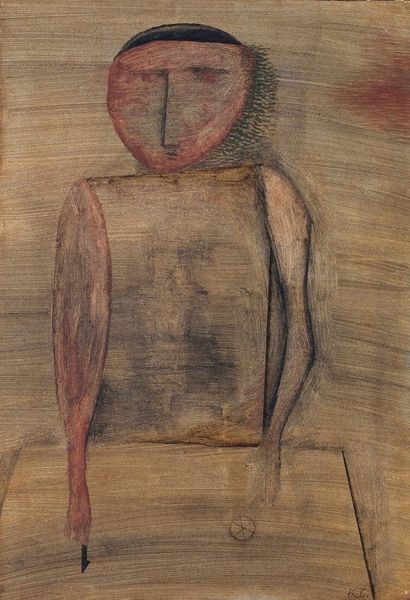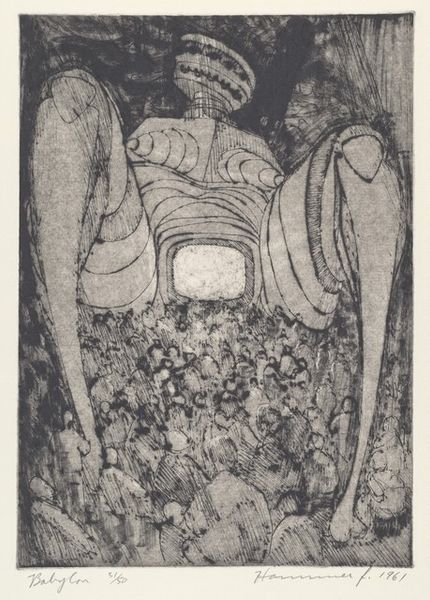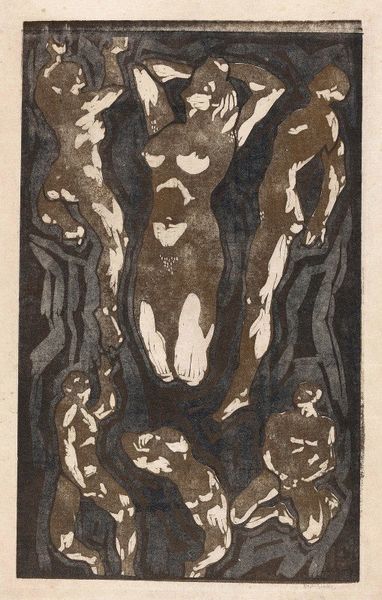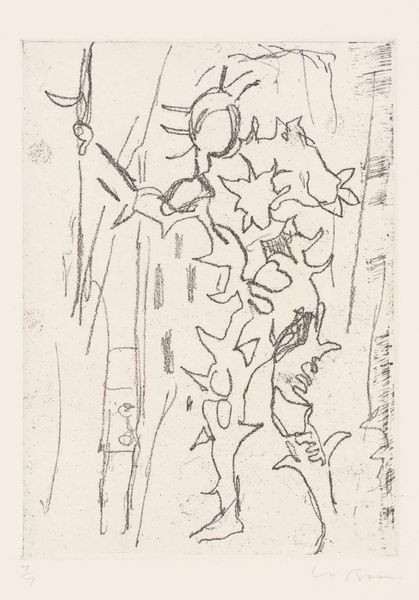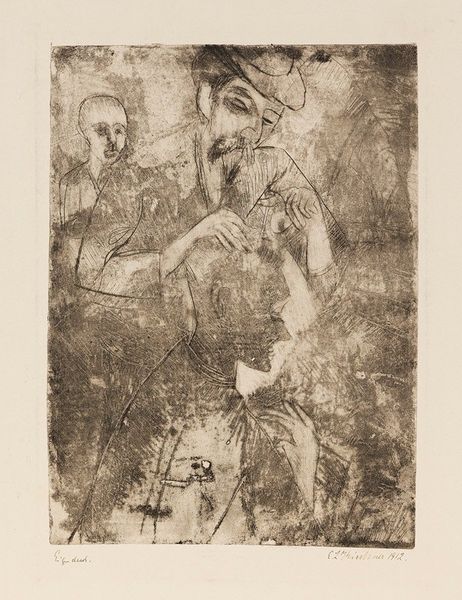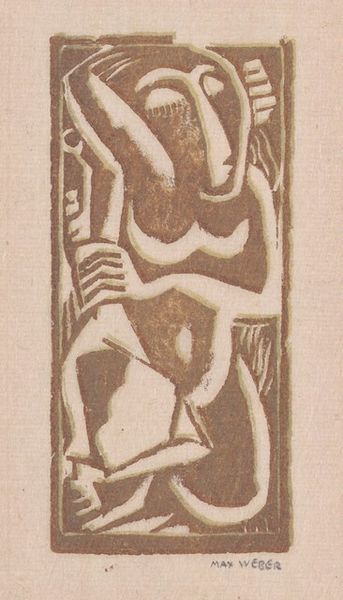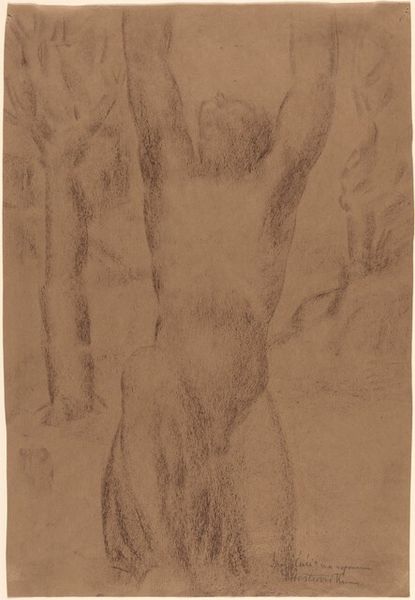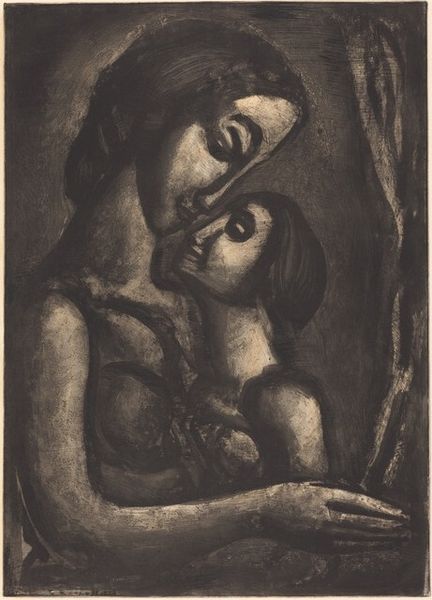
drawing, paper, ink, pencil, charcoal, pastel
#
portrait
#
drawing
#
narrative-art
#
charcoal drawing
#
figuration
#
paper
#
charcoal art
#
oil painting
#
ink
#
pencil
#
symbolism
#
portrait drawing
#
charcoal
#
pastel
#
post-impressionism
#
charcoal
Copyright: Public Domain: Artvee
Curator: There's such a potent stillness emanating from this work, a spiritual solemnity rendered in muted browns. Editor: Indeed. What we're looking at is "Hail Mary," a drawing by Paul Gauguin, created somewhere between 1893 and 1895. He employed charcoal, pastel, pencil, and ink on paper, achieving a remarkable depth with such understated media. Curator: That choice of medium is striking; it lends a rawness and immediacy, contrasting the iconic subject matter with a palpable earthiness. There’s an almost tangible cultural tension between the overt religious iconography and Gauguin's depiction of Polynesian figures. Do you see it the same way? Editor: Absolutely. It’s hard not to interpret Gauguin’s visual choices here through the lens of colonialism and exoticism which pervade his other works from this period. The "native" Madonna, overlaid on a deeply Christian scene—it reflects a specific political milieu and Gauguin's unique, sometimes problematic, role within it. How much do you read that clash intentionally, versus Gauguin perhaps romanticizing what he encountered in Tahiti? Curator: I believe there's intent—he was fascinated by syncretism, the blending of beliefs. Those kneeling figures in the background, rendered almost spectral, hint at a wider tapestry of cultural integration, whether real or imagined through his European perspective. And consider the title itself; it positions this distinctly Tahitian scene within a globally recognized spiritual narrative. Editor: The politics of such representation are inescapable. How do we reconcile his personal quest for the "primitive" with the societal impact of exoticizing another culture, even in the context of religious devotion? Curator: It's a complex entanglement. What endures for me is the arresting psychological weight of that central figure. Regardless of the political backdrop, that mother and child convey universal themes of nurturing, protection, and quiet strength. Editor: Agreed. It invites us to reflect not only on art history and Gauguin's particular choices, but on our contemporary relationship to these complex narratives, their beauty and their inherent power dynamics. Curator: A challenging and ultimately rewarding piece that transcends simple categories. Editor: Precisely, a layered work with questions still lingering after over a century of contemplation.
Comments
No comments
Be the first to comment and join the conversation on the ultimate creative platform.

